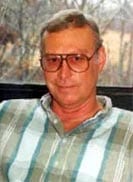William (Bill) Schmitz
The Woods Hole Oceanographic Institution announces with great sorrow the death of scientist emeritus Bill Schmitz on December 28 in Corpus Christi, Texas.
Bill earned a Bachelor’s of Science in physics in 1961 and his Ph.D. in 1966 in physical oceanography, both from the University of Miami.
He joined WHOI in 1967 as an assistant scientist and progressed through the scientific ladder in the Physical Oceanography Department to senior scientist in 1979. He retired from the Institution in 1997, maintaining the status of scientist emeritus.
His main research interests during his 30-year career at WHOI were related to the low-frequency large-scale circulation of the ocean, covering regional, basin and global domains.
“Bill was a leader in studies of ocean eddies and circulation,” said friend and former colleague Peter Rhines. “He was a bridge between the ‘greatest generation’ of early physical oceanography of the 1950s and 1960s and the era of modern field studies culminating in the present global ocean observing system.”
Bill joined the WHOI Buoy Group and became a champion for developing the scientific and engineering expertise needed for long-term accurate measurements of currents and temperature in the ocean.
“Bill was instrumental in using in-situ data to examine the reality of ocean models and, in turn, to use models to understand the physics revealed by the data,” said Bob Weller, a WHOI senior scientist in the Physical Oceanography Department.
The capability for long-term observations was key for modern physical oceanography, enabling the first large-scale experiments – the Mid Ocean Dynamics Experiment and subsequent POLYMODE experiments, and similar studies in the Pacific Ocean.
Bill was a colleague to a wide range of people and was someone who worked for the greater good of the field rather than for his own personal success. Due to his unusual ability to connect with people, Bill had close personal relationships with everyone from ONR program managers to the technicians and data processors, who were able to provide unprecedented, high quality in situ data.
“Bill provided mentoring to many successful scientist in our department, including Jim Luyten, Nelson Hogg, Mel Briscoe, Phil Richardson, Jim Price, and me that allowed us to make important observations of the ocean circulation and eddies,” said Breck Owens, an emeritus research scholar in the Physical Oceanography Department. “He also collaborated with many other scientists, particularly ocean modelers, to use these observations to better understand the ocean.”
From 1990 through 1996, Bill served on the Naval Research Advisory Committee. For his service, he was given the Navy’s Meritorious Public Service Award, which recognized his help “guiding the research and development requirements of the Department of the Navy and Nation. As a result of his dedicated efforts, he unequivocally helped the Navy’s leadership to formulate strategies leading to significant technological advances for the warfighter.”
He was honored in 1996 with the U.S. Navy’s Superior Public Service Award for his “extraordinary advances in understanding ocean circulation by conducting a unique program of ocean current measurements.” The award citation noted that “his remarkable, singularly successful measurements of the Gulf Stream’s velocity determined, for the first time, the mean value and variability statistics of volume transport of this current” and that his “statistical and geographical structure studies of the low frequency eddy field and currents revolutionized our understanding of both the Gulf Stream and Kuroshio currents.”
In 1996, Bill published the culmination of what he had learned about large-scale ocean currents in a two-volume monograph, On the World Ocean Circulation: Volume I, Some Global Features/North Atlantic Circulation, and Volume II, The Pacific and Indian Oceans/A Global Update. In the book’s abstract, he wrote, “Seemingly simple questions about how ocean currents behave…have been exciting and difficult research topics for many years.”
Bill was a fellow of the American Geophysical Union (1987) and in 1992 was awarded WHOI’s W. Van Alan Clark Jr.Chair for Excellence in Oceanography. He authored or co-authored 60 peer-reviewed scientific publications.
Bill retired to Corpus Christi, Texas, in 1997. In his retirement he collaborated closely with the COAPS, Florida State University circulation modeling group, and worked on a review of what is known about the circulation of the Gulf of Mexico.
A memorial service will be held on January 6 in Corpus Christi, Texas.

